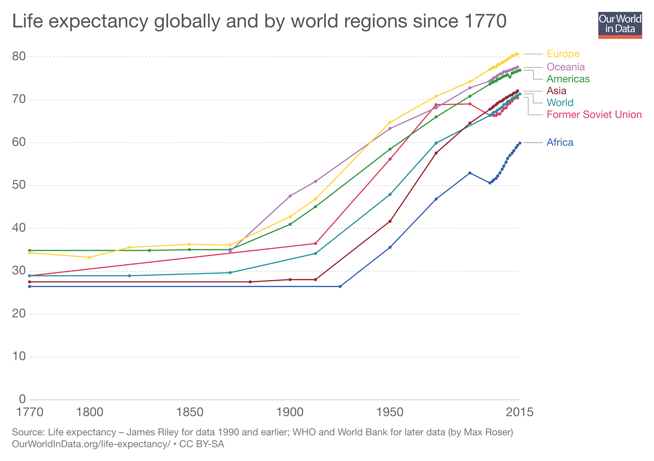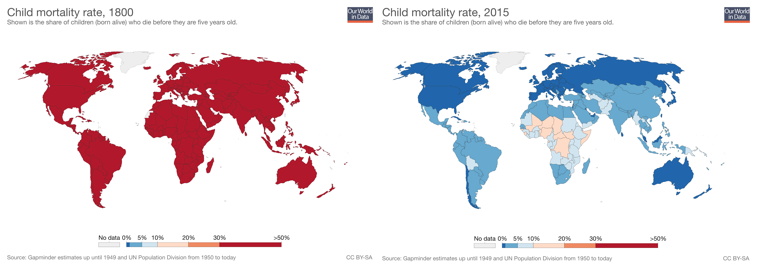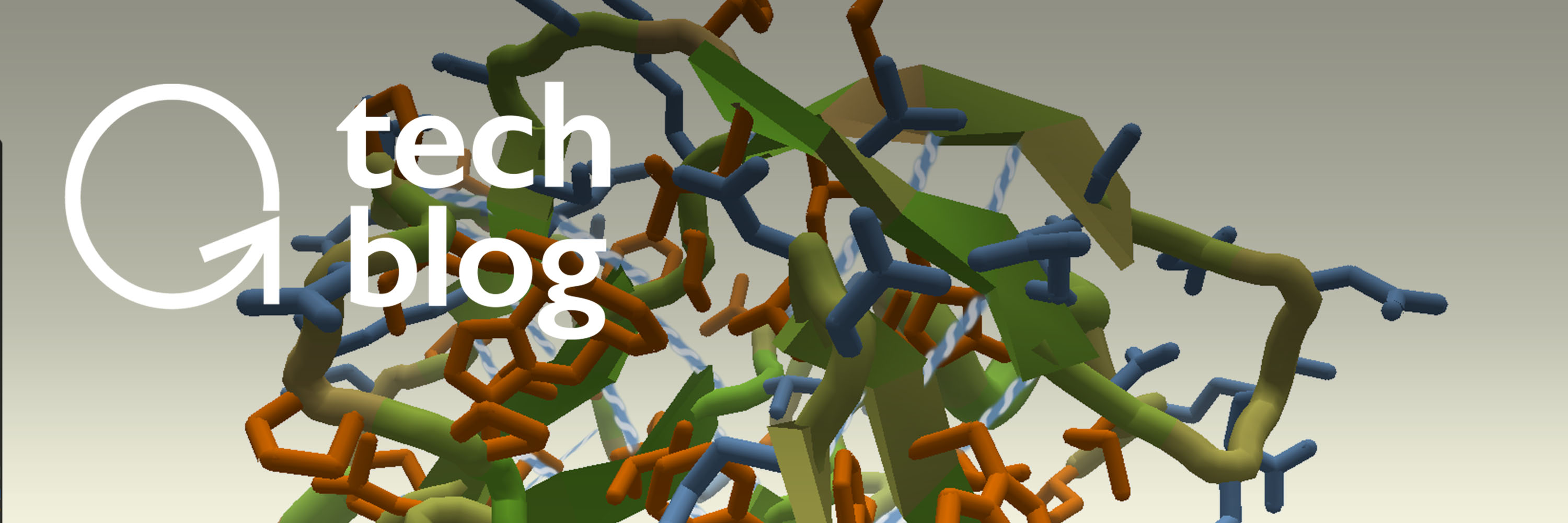
Healthcare today is reactive, retrospective, bureaucratic and expensive. It's sick care, not healthcare.
But that is radically changing at an exponential rate.
Last year alone, we saw nearly $800 million invested in longevity startups — over double the approximate $400 million invested in 2017.
Through this multi-part blog series on Longevity, I’ll take a deep dive into aging, longevity technology, and healthcare technologies that are working together to dramatically extend the human lifespan, disrupting the $3 trillion healthcare system in the process.
I’ll begin the series by explaining the nine hallmarks of aging, as explained in this journal article.
Next, I’ll break down the emerging technologies and initiatives working to combat these nine hallmarks.
Finally, I’ll explore the transformative implications of dramatically extending the human health span.
In this blog I’ll cover:
- Why the healthcare system is broken
- Why, despite this, we live in the healthiest time in human history
- The 9 Mechanisms of Aging
Let’s dive in.
The System is Broken — Here’s the Data:
- Doctors spend $210 billion per year on procedures that aren’t based on patient need, but fear of liability.
- Americans spend, on average, $8,915 per person on healthcare — more than any other country on Earth.
- Prescription drugs cost around 50 percent more in the U.S. than in other industrialized countries.
- At current rates, by 2025, nearly 25 percent of the U.S. GDP will be spent on healthcare.
- It takes 12 years and $359 million, on average, to take a new drug from the lab to a patient.
- Only 5 in 5,000 of these new drugs proceed to human testing. From there, only 1 of those 5 is actually approved for human use.
And Yet, We Live in the Healthiest Time in Human History:
Consider these insights, which I adapted from Max Roser’s excellent database Our World in Data:
- Right now, the countries with the lowest life expectancy in the world still have higher life expectancies than the countries with the highest life expectancy did in 1800.
- In 1841, a 5-year-old had a life expectancy of 55 years. Today, a 5-year old can expect to live 82 years — an increase of 27 years.
- We’re seeing a dramatic increase in healthspan. In 1845, a newborn would expect to live to 40 years old. For a 70-year-old, that number became 79. Now, people of all ages can expect to live to be 81 to 86 years old.
- 100 years ago, 1 of 3 children would die before the age of 5. As of 2015, the child mortality rate fell to just 4.3 percent.
- The cancer mortality rate has declined 27 percent over the past 25 years.

Figure: Around the globe, life expectancy has doubled since the 1800s.

Figure: A dramatic reduction in child mortality in 1800 vs. in 2015.
The 9 Mechanisms of Aging:
*This section was adapted from CB INSIGHTS: The Future Of Aging.
Longevity, healthcare, and aging are intimately linked.
With better healthcare, we can better treat some of the leading causes of death, impacting how long we live, i.e., we can do much better longevity predictions.
By investigating how to treat diseases, we’ll inevitably better understand what causes these diseases in the first place, which directly correlates to why we age.
Following are the nine hallmarks of aging. I’ll share examples of health-tech and longevity technologies addressing each of these later in this blog series.
- Genomic instability: As we age, the environment and normal cellular processes cause damage to our genes. Activities like flying at high altitude, for example, expose us to increased radiation or free radicals. This damage compounds over the course of life and is known to accelerate aging.
- Telomere attrition: Each strand of DNA in the body (known as chromosomes) is capped by telomeres. These short snippets of DNA repeated thousands of times are designed to protect the bulk of the chromosome. Telomeres shorten as our DNA replicates; if a telomere reaches a certain critical shortness, a cell will stop dividing, resulting in increased incidence of disease.
- Epigenetic alterations: Over time, environmental factors will change how genes are expressed, i.e., how certain sequences of DNA are read and the instruction set implemented.
- Loss of proteostasis: Over time, different proteins in our body will no longer fold and function as they are supposed to, resulting in diseases ranging from cancer to neurological disorders.
- Deregulated nutrient-sensing: Nutrient levels in the body can influence various metabolic pathways. Among the affected parts of these pathways are proteins like IGF-1, mTOR, sirtuins, and AMPK. Changing levels of these proteins’ pathways has implications on longevity.
- Mitochondrial dysfunction: Mitochondria (our cellular power plants) begin to decline in performance as we age. Decreased performance results in excess fatigue and other symptoms of chronic illnesses associated with aging.
- Cellular senescence: As cells age, they stop dividing and cannot be removed from the body. They build up and typically cause increased inflammation.
- Stem cell exhaustion: As we age, our supply of stem cells begins to diminish as much as 100 to 10,000-fold in different tissues and organs. In addition, stem cells undergo genetic mutations, which reduce their quality and effectiveness at renovating and repairing the body.
- Altered intercellular communication: The communication mechanisms that cells use are disrupted as cells age, resulting in decreased ability to transmit information between cells.
Conclusion
Over the past 200 years, we have seen an abundance of healthcare technologies enable a massive lifespan boom.
Now, exponential technologies like artificial intelligence, 3D printing and sensors, as well as tremendous advancements in genomics, stem cell research, chemistry and many other fields, are beginning to tackle the fundamental issues of why we age.
In the next blog in this series, we will dive into how genome sequencing and editing, along with new classes of drugs, are augmenting our biology to further extend our healthy lives.
Each year at Abundance 360, I host a panel of world-class longevity researchers and CEOs to update our members on the current state and near future of these technologies. In just two weeks, I’ll be joined by Dr. Robert Hariri, Founder and CEO of Celularity, and legendary investor Jim Mellon of Juvenescence for a conversation on Longevity and Vitality. To apply for A360 and share your story, visit here.
What will you be able to achieve with an extra 30 to 50 healthy years (or longer) in your lifespan? Personally, I’m excited for a near-infinite lifespan to take on Moonshots.
Join Me
(1) A360 Executive Mastermind: This is one of the key conversations I’ll be exploring at my Executive Mastermind group called Abundance 360. The program is highly selective, for 360 abundance- and exponentially minded CEOs (running $10M to $50B companies). If you’d like to be considered, apply here.
Share this with your friends, especially if they are interested in any of the areas outlined above.
(2) Abundance-Digital Online Community: I’ve also created a Digital/Online community of bold, abundance-minded entrepreneurs called Abundance-Digital. Abundance-Digital is my ‘onramp’ for exponential entrepreneurs – those who want to get involved and play at a higher level. Click here to learn more.
Topics: Abundance AI Medicine/Health Longevity health healthcare preventive medicine Stem Cells protein-folding aging







